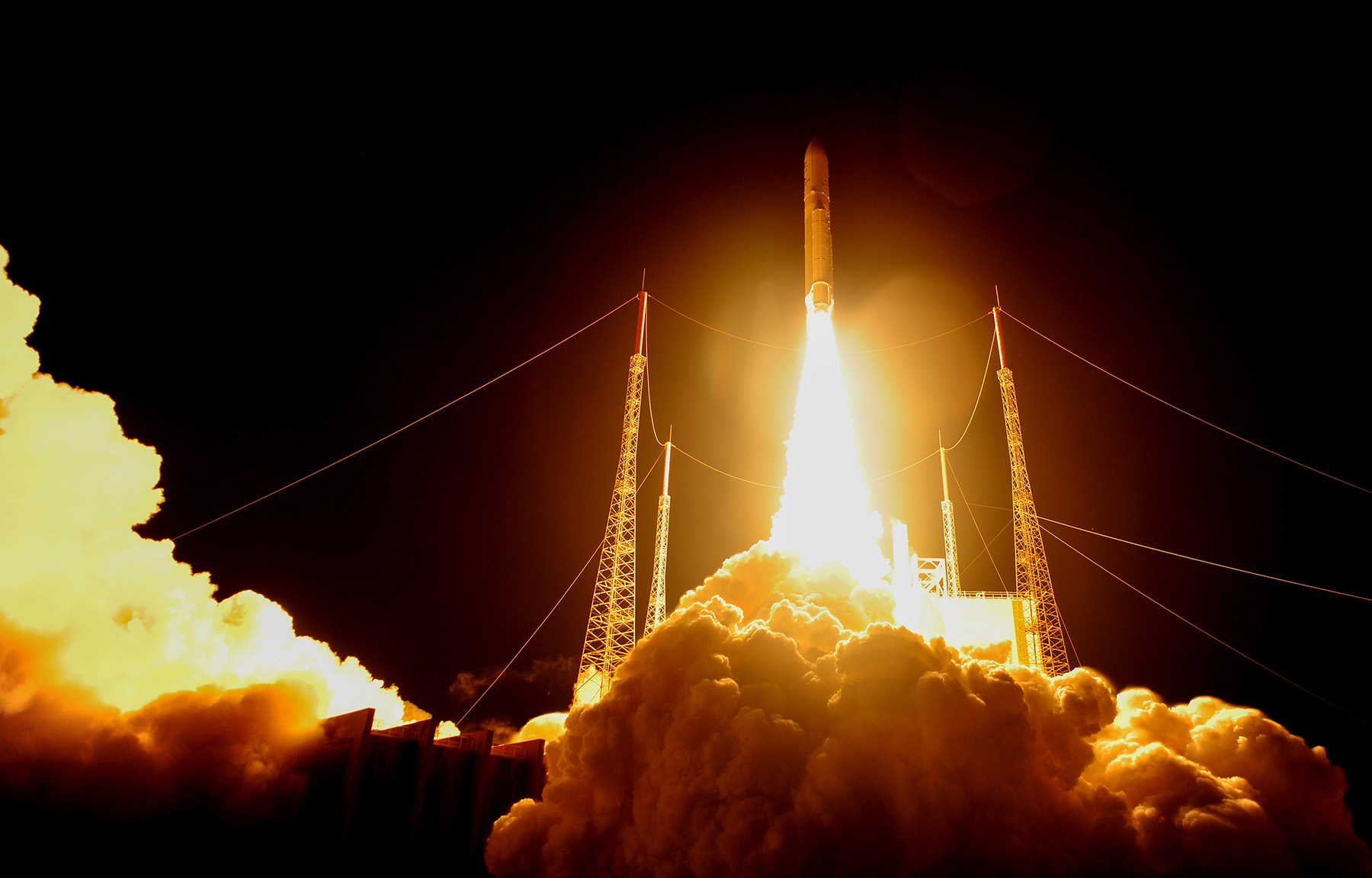The University of Leicester has been involved with the James Webb Space Telescope since the early days of the project, providing the Mechanical Engineering Lead for the Mid-Infrared Instrument (MIRI). In collaboration with the Danish National Space Centre, Leicester was responsible for design and provision of the MIRI Primary Structure and provided support for MIRI test and calibration activities.
Launched in 2018 and due to reach Mercury in 2025, the ESA-JAXA BepiColombo joint mission to Mercury features significant Leicester input. The Mercury Imaging X-ray Spectrometer (MIXS) was developed by a Europe-wide consortium led by the University of Leicester, including institutes and companies in the UK, Finland, Spain, Germany and France.
Working closely with the National Nuclear Laboratory, a team of Leicester researchers are pioneering the use of Americium-241 as fuel for deep space probes. Led by Professor Richard Ambrosi, the Leicester team has developed a working prototype power system for ESA using this isotope, which can be extracted from transuranic waste, making it a viable – and environmentally friendly – alternative radioisotope for space and terrestrial applications.
A joint project between ESA and Eumetsat, Meteosat Second Generation (MSG) can take images at more wavelengths and at shorter intervals than the original Meteosat, making it particularly suitable for short-term forecasting of sudden troublesome weather phenomena, such as snow, thunderstorms and fog. The Geostationary Earth Radiation Budget (GERB) experiment, which uses electronics developed at the University of Leicester, contributes to climate change studies by measuring the amount of radiation arriving on Earth from the Sun and the amount leaving as heat, together with scattered and reflected solar radiation.
The SMILE (Solar wind Magnetosphere Ionosphere Link Explorer) probe, a joint ESA-Chinese mission set for launch in 2024, will carry the Soft X-ray Imager (SXI) developed at the University of Leicester. SXI will continuously monitor the position of the boundary between the region of space controlled by the Earth’s magnetic field and the solar wind. Its images will help scientists refine models of how this Sun-Earth connection responds to ‘space weather’.
NASA’s Cassini mission to Saturn’s moons investigated the presence of explosive ice geysers towering over the south pole of Enceladus, fly as close as possible to the plumes to search for evidence of sub-surface water containing the building blocks of life. Mathematical modelling, conducted at the University of Leicester, allowed the mission designers to calculate the possibility of the spacecraft colliding with dust from the Enceladus jets, with potentially catastrophic results, enabling the craft to be manoeuvred as close as safely possible to the moon’s surface to capture the images it required.
Initially designed to detect and follow-up Gamma-Ray Bursts, the Neil Gehrels Swift Observatory is a rapid-response mission well-placed to observe most transient sources throughout the Universe. The University of Leicester provided the key system designs for the spacecraft’s X-ray Telescope and built the low-temperature CCD focal plane camera and the Telescope Alignment Monitor. The University hosts the UK Swift Science Data Centre, leads the X-ray calibration work, offers unique high-level XRT products and continues to provide operation support for the mission.
ESA’s Rosalind Franklin rover will search for signs of past and present life on Mars, characterising the water/geochemical environment as a function of depth in the planet’s shallow subsurface. One of the instruments on the rover, the Raman Laser Spectrometer (RLS), was developed by a group of European partners including the University of Leicester. The team at Leicester, who will play a full role during the ExoMars mission’s surface operations, developed a comprehensive range of laboratory instruments and analogue samples to help prepare for mission activities and successful exploitation of the data returned.



